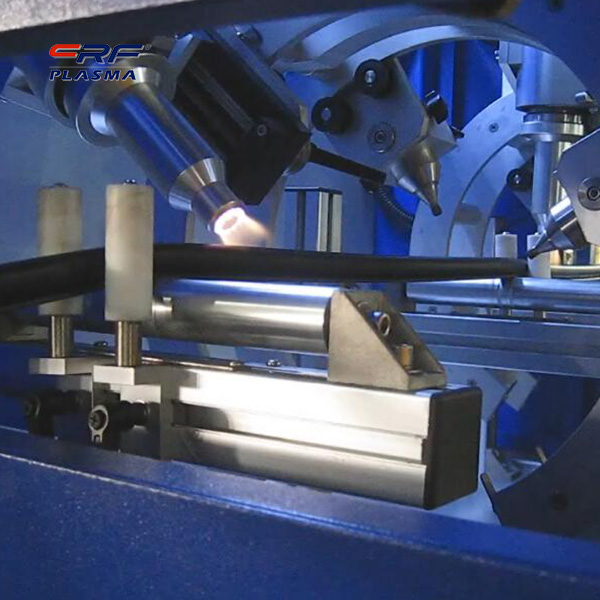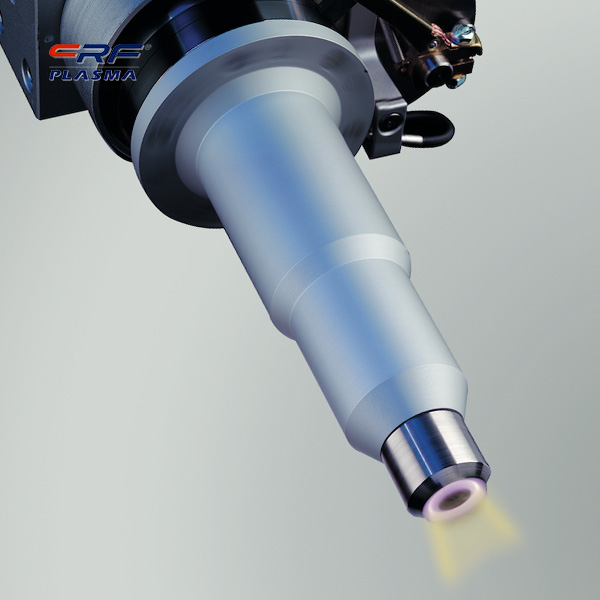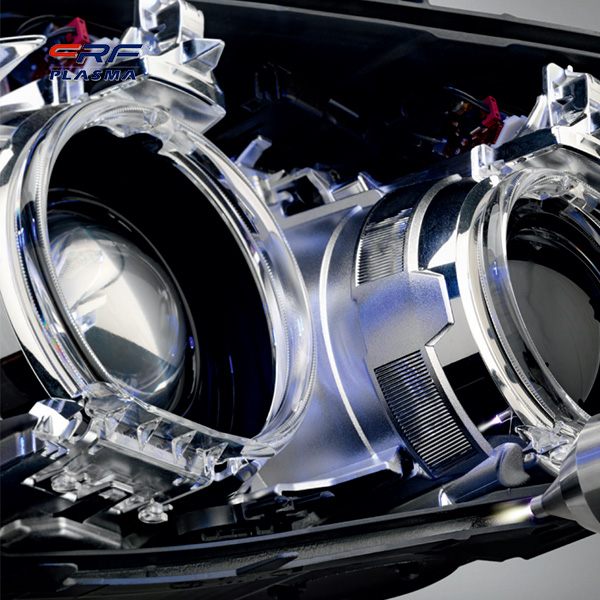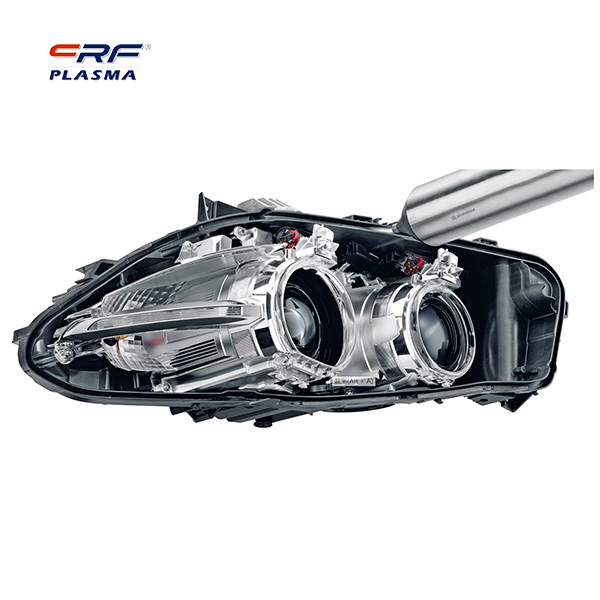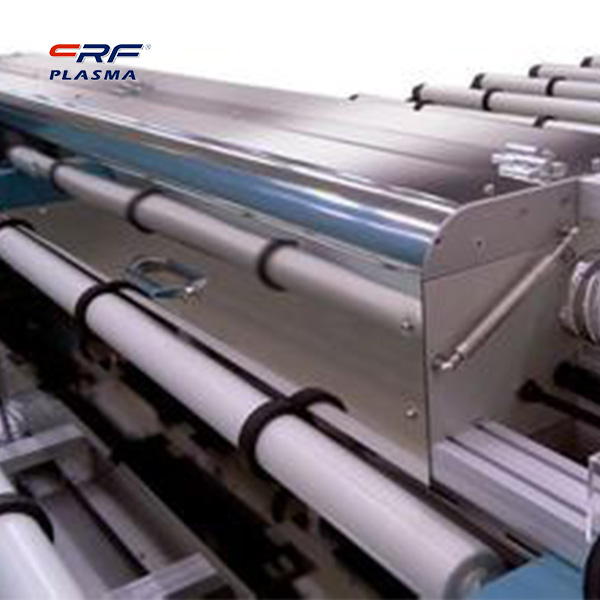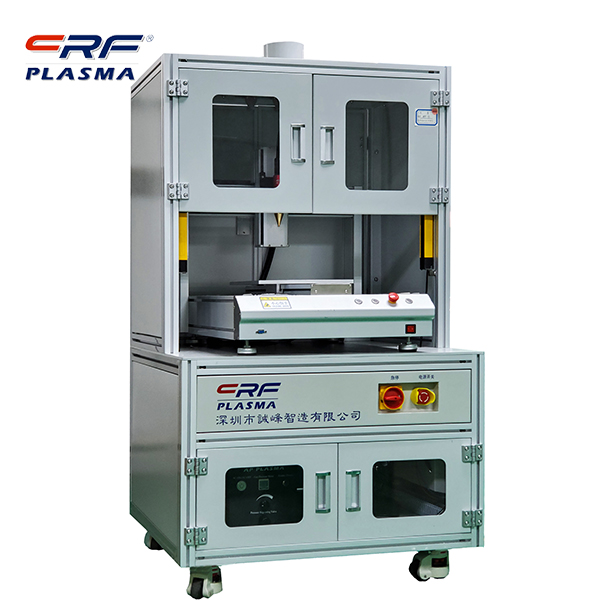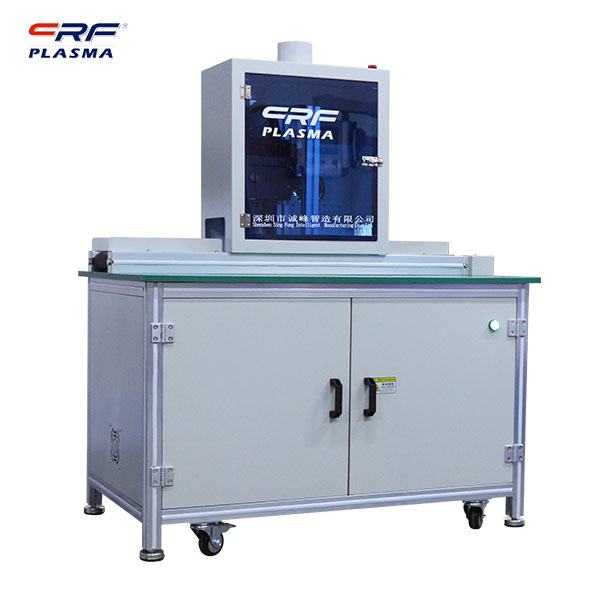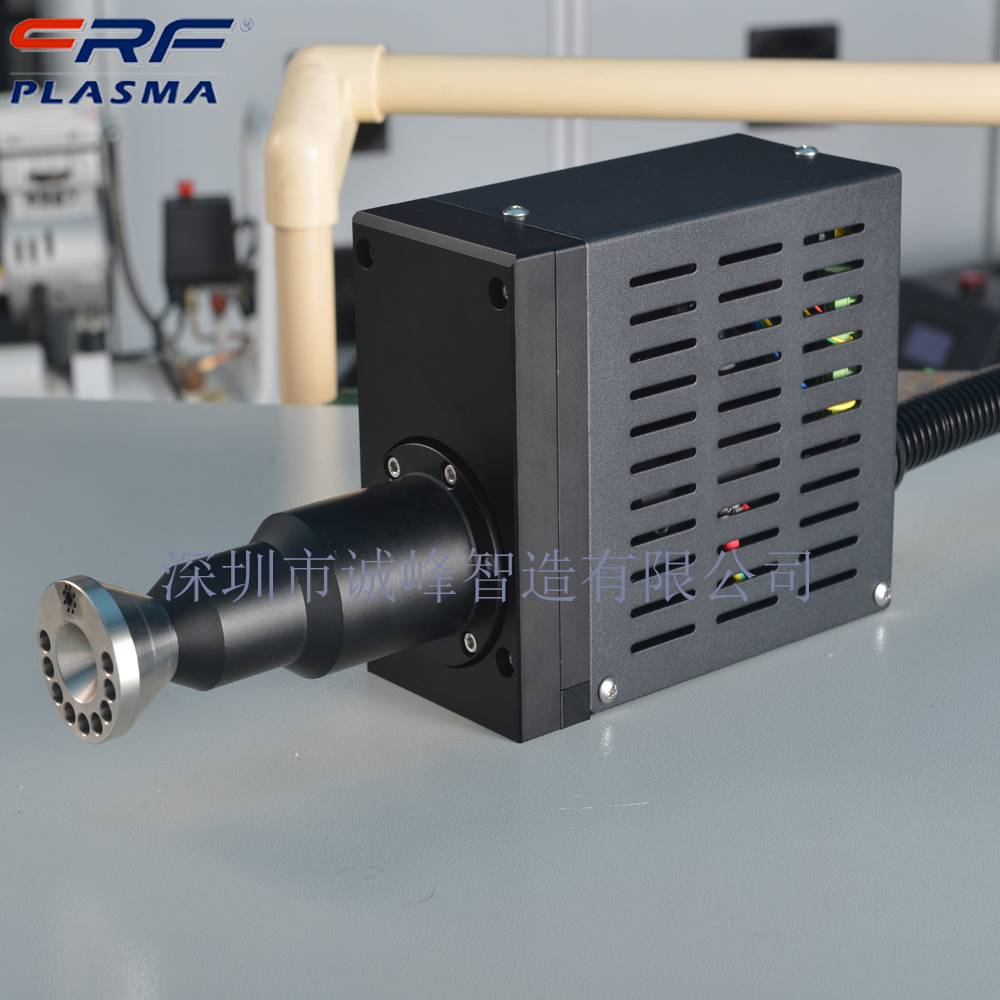
Welcome to Shenzhen Sing Fung Intelligent Manufacturing Co., Ltd.
E-mail:shaobo@sfi-crf.com
Preliminary discussion on the co-action mechanism of plasma and catalyst
- Categories:Company Dynamics
- Author:Plasma cleaning machine-CRF plasma plasma equipment-plasma surface treatment machine manufacturer-chengfeng intelligent manufacturing
- Origin:
- Time of issue:2022-03-10
- Views:
(Summary description)Preliminary discussion on the co-action mechanism of plasma and catalyst: The research results of the reaction of CO2 oxidation of CH4 to C2 hydrocarbons under the action of plasma plasma and various catalysts show that the co-action mechanism of plasma plasma and catalyst is different from that of pure plasma or ordinary catalytic activation. The oxidation of CO2 under the action of pure plasma plasma The CH4 conversion reaction is a free radical process, and the selectivity of the target product is low; the catalyst does not show catalytic activity below 80 °C. When a catalyst is introduced into the plasma, the catalyst adsorbs reactants through adsorption, and free radicals participate in the surface reaction, which affects the conversion rate of reactants and the yield of products; plasma plasma is introduced into the catalytic process, and the plasma provides the necessary energy for catalyst activation. , and will also have direct and indirect effects on reactant adsorption, surface reactions, and product desorption processes. According to the experimental results, the co-action of the plasma and the catalyst is manifested in the following aspects. (1) The plasma plasma continuously activates the catalyst. There are a large number of high-energy particles in the plasma, and these high-energy particles mainly transfer energy to the catalyst through collision and activate the catalyst. Therefore, even at lower experimental temperatures (below 100 °C), the catalysts studied in the experiments still show high catalytic activity. (2) The catalyst has a certain influence on the plasma discharge state. Different catalyst types have different influences. Marafee et al. studied the effect of metal oxide catalysts with OH groups on the oxidative coupling reaction of methane in corona discharge plasma, and the results showed that the catalysts with OH groups could enhance the gas discharge effect and lead to methane conversion and C2 hydrocarbon yield increased significantly. The research shows that the basicity of the catalyst is beneficial to the formation of C2 hydrocarbons. (3) The catalyst has an activating effect on the reactants. The catalyst activates the reactant by adsorption, and promotes the conversion of the reactant. The study on the activation and conversion mechanism of methane under catalysis shows that the C-H bond of methane adsorbed on the active center of the catalyst is activated due to the filling of electrons by the anti-bond σ* orbital electrons, and the C-H bond energy is reduced. In the joint action of the plasma and the catalyst, the catalyst activated by the plasma may activate the CH bond and CO bond of the reactant in the same way, and the high-energy electrons with lower energy in the plasma interact with the activated reactant to promote the conversion of the reactant. . It is worth pointing out that under the same plasma plasma injection power, the conversion rate of reactants under the joint action of some catalysts and plasma is lower than that of pure plasma experiments under the same conditions, which may be due to the fact that catalyst activation consumes more energy. (4) Another function of the catalyst may be to selectively adsorb the active species, promote the reaction of the active species, remove the excess energy of the new material to prevent its decomposition, improve the product yield, and reduce the formation of carbon deposition. Therefore, the joint action of plasma and catalyst is a potential enhanced reaction process and a brand-new research direction. Once a breakthrough is made, it is bound to promote the development of the emerging interdisciplinary field of plasma. Thank you for your attention and support to Chengfeng Zhizao atmospheric plasma cleaning machine. The company is committed to providing users with comprehensive surface performance treatment and testing solutions, and independently develops, produces and sells plasma surface treatment equipment. Dedicated to the research of surface properties for many years, adhere to the tenet of continuous innovation, and professional quality service, it has won the unanimous recognition of users at home and abroad.
Preliminary discussion on the co-action mechanism of plasma and catalyst
(Summary description)Preliminary discussion on the co-action mechanism of plasma and catalyst:
The research results of the reaction of CO2 oxidation of CH4 to C2 hydrocarbons under the action of plasma plasma and various catalysts show that the co-action mechanism of plasma plasma and catalyst is different from that of pure plasma or ordinary catalytic activation. The oxidation of CO2 under the action of pure plasma plasma The CH4 conversion reaction is a free radical process, and the selectivity of the target product is low; the catalyst does not show catalytic activity below 80 °C. When a catalyst is introduced into the plasma, the catalyst adsorbs reactants through adsorption, and free radicals participate in the surface reaction, which affects the conversion rate of reactants and the yield of products; plasma plasma is introduced into the catalytic process, and the plasma provides the necessary energy for catalyst activation. , and will also have direct and indirect effects on reactant adsorption, surface reactions, and product desorption processes. According to the experimental results, the co-action of the plasma and the catalyst is manifested in the following aspects.
(1) The plasma plasma continuously activates the catalyst. There are a large number of high-energy particles in the plasma, and these high-energy particles mainly transfer energy to the catalyst through collision and activate the catalyst. Therefore, even at lower experimental temperatures (below 100 °C), the catalysts studied in the experiments still show high catalytic activity.
(2) The catalyst has a certain influence on the plasma discharge state. Different catalyst types have different influences. Marafee et al. studied the effect of metal oxide catalysts with OH groups on the oxidative coupling reaction of methane in corona discharge plasma, and the results showed that the catalysts with OH groups could enhance the gas discharge effect and lead to methane conversion and C2 hydrocarbon yield increased significantly. The research shows that the basicity of the catalyst is beneficial to the formation of C2 hydrocarbons.
(3) The catalyst has an activating effect on the reactants. The catalyst activates the reactant by adsorption, and promotes the conversion of the reactant. The study on the activation and conversion mechanism of methane under catalysis shows that the C-H bond of methane adsorbed on the active center of the catalyst is activated due to the filling of electrons by the anti-bond σ* orbital electrons, and the C-H bond energy is reduced. In the joint action of the plasma and the catalyst, the catalyst activated by the plasma may activate the CH bond and CO bond of the reactant in the same way, and the high-energy electrons with lower energy in the plasma interact with the activated reactant to promote the conversion of the reactant. . It is worth pointing out that under the same plasma plasma injection power, the conversion rate of reactants under the joint action of some catalysts and plasma is lower than that of pure plasma experiments under the same conditions, which may be due to the fact that catalyst activation consumes more energy.
(4) Another function of the catalyst may be to selectively adsorb the active species, promote the reaction of the active species, remove the excess energy of the new material to prevent its decomposition, improve the product yield, and reduce the formation of carbon deposition. Therefore, the joint action of plasma and catalyst is a potential enhanced reaction process and a brand-new research direction. Once a breakthrough is made, it is bound to promote the development of the emerging interdisciplinary field of plasma.
Thank you for your attention and support to Chengfeng Zhizao atmospheric plasma cleaning machine. The company is committed to providing users with comprehensive surface performance treatment and testing solutions, and independently develops, produces and sells plasma surface treatment equipment. Dedicated to the research of surface properties for many years, adhere to the tenet of continuous innovation, and professional quality service, it has won the unanimous recognition of users at home and abroad.
- Categories:Company Dynamics
- Author:Plasma cleaning machine-CRF plasma plasma equipment-plasma surface treatment machine manufacturer-chengfeng intelligent manufacturing
- Origin:
- Time of issue:2022-03-10 10:36
- Views:
Preliminary discussion on the co-action mechanism of plasma and catalyst:
The research results of the reaction of CO2 oxidation of CH4 to C2 hydrocarbons under the action of plasma plasma and various catalysts show that the co-action mechanism of plasma plasma and catalyst is different from that of pure plasma or ordinary catalytic activation. The oxidation of CO2 under the action of pure plasma plasma The CH4 conversion reaction is a free radical process, and the selectivity of the target product is low; the catalyst does not show catalytic activity below 80 °C. When a catalyst is introduced into the plasma, the catalyst adsorbs reactants through adsorption, and free radicals participate in the surface reaction, which affects the conversion rate of reactants and the yield of products; plasma plasma is introduced into the catalytic process, and the plasma provides the necessary energy for catalyst activation. , and will also have direct and indirect effects on reactant adsorption, surface reactions, and product desorption processes. According to the experimental results, the co-action of the plasma and the catalyst is manifested in the following aspects.
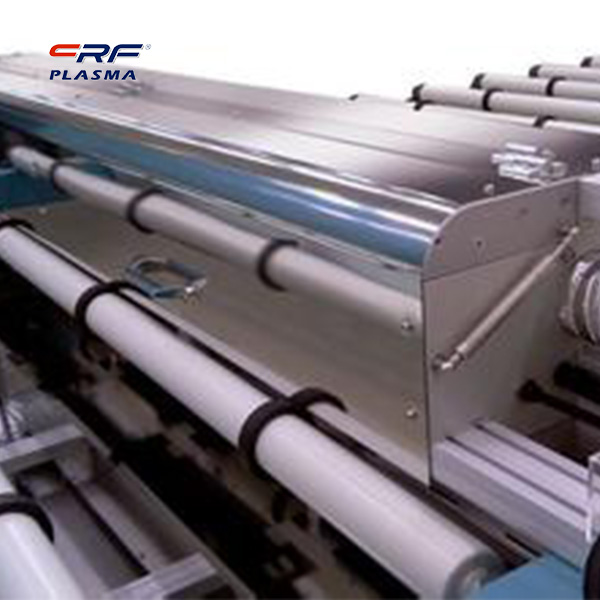 (1) The plasma plasma continuously activates the catalyst. There are a large number of high-energy particles in the plasma, and these high-energy particles mainly transfer energy to the catalyst through collision and activate the catalyst. Therefore, even at lower experimental temperatures (below 100 °C), the catalysts studied in the experiments still show high catalytic activity.
(1) The plasma plasma continuously activates the catalyst. There are a large number of high-energy particles in the plasma, and these high-energy particles mainly transfer energy to the catalyst through collision and activate the catalyst. Therefore, even at lower experimental temperatures (below 100 °C), the catalysts studied in the experiments still show high catalytic activity.
(2) The catalyst has a certain influence on the plasma discharge state. Different catalyst types have different influences. Marafee et al. studied the effect of metal oxide catalysts with OH groups on the oxidative coupling reaction of methane in corona discharge plasma, and the results showed that the catalysts with OH groups could enhance the gas discharge effect and lead to methane conversion and C2 hydrocarbon yield increased significantly. The research shows that the basicity of the catalyst is beneficial to the formation of C2 hydrocarbons.
(3) The catalyst has an activating effect on the reactants. The catalyst activates the reactant by adsorption, and promotes the conversion of the reactant. The study on the activation and conversion mechanism of methane under catalysis shows that the C-H bond of methane adsorbed on the active center of the catalyst is activated due to the filling of electrons by the anti-bond σ* orbital electrons, and the C-H bond energy is reduced. In the joint action of the plasma and the catalyst, the catalyst activated by the plasma may activate the CH bond and CO bond of the reactant in the same way, and the high-energy electrons with lower energy in the plasma interact with the activated reactant to promote the conversion of the reactant. . It is worth pointing out that under the same plasma plasma injection power, the conversion rate of reactants under the joint action of some catalysts and plasma is lower than that of pure plasma experiments under the same conditions, which may be due to the fact that catalyst activation consumes more energy.
(4) Another function of the catalyst may be to selectively adsorb the active species, promote the reaction of the active species, remove the excess energy of the new material to prevent its decomposition, improve the product yield, and reduce the formation of carbon deposition. Therefore, the joint action of plasma and catalyst is a potential enhanced reaction process and a brand-new research direction. Once a breakthrough is made, it is bound to promote the development of the emerging interdisciplinary field of plasma.
Thank you for your attention and support to Chengfeng Zhizao atmospheric plasma cleaning machine. The company is committed to providing users with comprehensive surface performance treatment and testing solutions, and independently develops, produces and sells plasma surface treatment equipment. Dedicated to the research of surface properties for many years, adhere to the tenet of continuous innovation, and professional quality service, it has won the unanimous recognition of users at home and abroad.
Scan the QR code to read on your phone

TEL:0755-3367 3020 / 0755-3367 3019

E-mail:sales-sfi@sfi-crf.com

ADD:Mabao Industrial Zone, Huangpu, Baoan District, Shenzhen





